In order to protect ourselves and do mundane tasks like opening envelopes and cutting fruits, we need to carry pocket knives with us. But in order for the pocket knife to work properly, it has to stay sharp.
Now, there is a process that goes into sharpening your pocket knife. You have to follow certain steps and need a few materials to make sure the task in hand goes as smoothly as possible.
And we will give detailed information regarding all the things you need to know about how to sharpen your pocket knife razor-sharp.
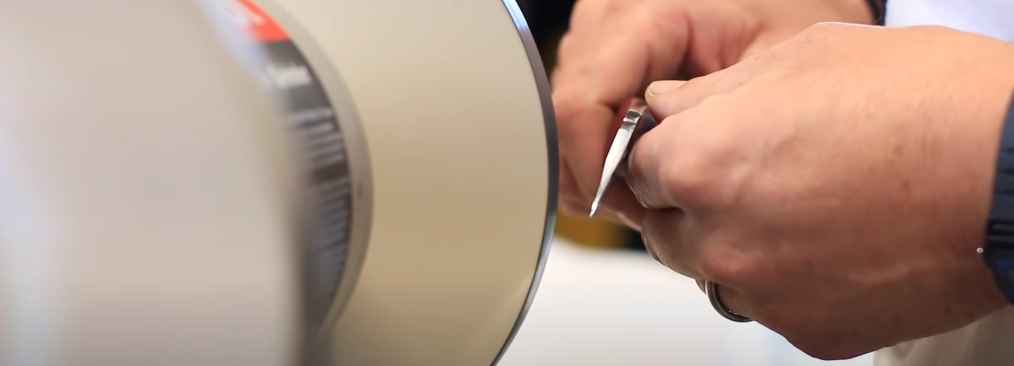
Why the Blade Gets Dull?
First and foremost, let us tackle the part of the blade that dulls and why it happens. The pocket knife has a top side that is blunt, and then there is an underside, that is the part which is used to cut things. Even some knives have two blades that get dull over time.
Now that is the part you are going to have to sharpen as without the sharp blade, you will not be able to accomplish any task. The blade starts to dull very quickly upon frequent use.
Well, when you use the blade to do different types of work, the chances are that there will be some sort of damages to the edge, which is the reason the knife becomes dull. Your job will be to assess the damage your blade went through and fix it.
Fixing is needed so that you can have a razor-sharp pocket knife. Otherwise, your cutting tool will not be as effective and efficient
How to De-stress the Metal Edge?
Before you can get to the actual task, you have to de-stress the metal. This will make your sharpening task much easier. Also, this is a very important part of the process, as the metal of the pocket knife has been through a lot due to the constant use.
Unless you de-stress the metal at the top, you will not be able to make use of the good and unused part that is on the inside. You will be able to do this task by using a blade sharpening stone. There are numerous stones you can make use of to get rid of the to layer.
What you will essentially do is take the layer off by rubbing the rough stone on the knife. Here the angle of the stone is important; it has to be held perpendicular to the edge.
The Right Sharpening Angle
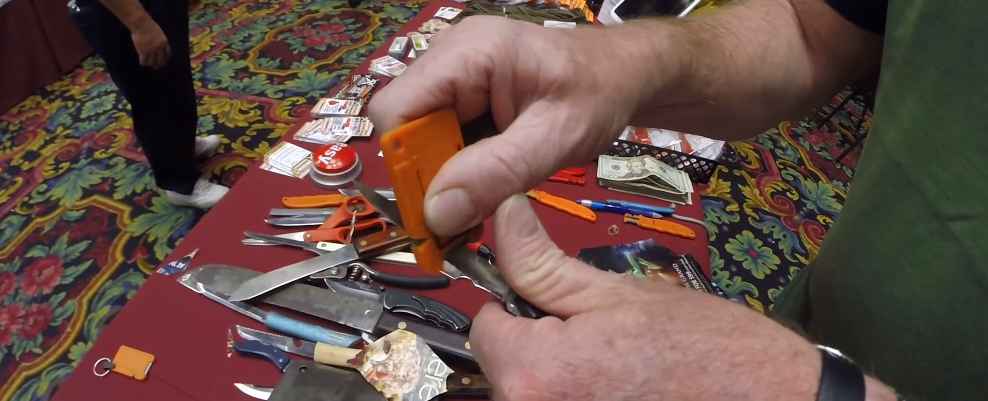
You cannot really expect the outcome to be good if you are unable to hold the stone to the blade. The angle of the stone will determine how to sharpen a pocket knife razor sharp. There are some devices you can use to sharpen the knife properly.
But if you don’t have the sharpening, then you should start off by holding the knife against the stone at a 15° angle. You have to ensure that both sides are sharpened at the same angles. Otherwise, the knife will look crooked.
Now, measuring the 15° might be a problem if you don’t have a protector. If you do have it, then you can hold it to the stone and figure out at which angle the blade needs to be placed.
If, however, you don’t have one, then you can use the paper folding method to figure out the 15° angle mark. Take a paper, the perpendicular lines of the edges make a 90° angle, fold that into three equals. Which gives you a 30° angle, all you have left is to fold that into half, and there you have a guide for the 15° angle.
That is all there is to it when identifying the angle at which you need to sharpen the pocket knife with a sharpening stone.
How to Sharpen the Knife Using the Stone?
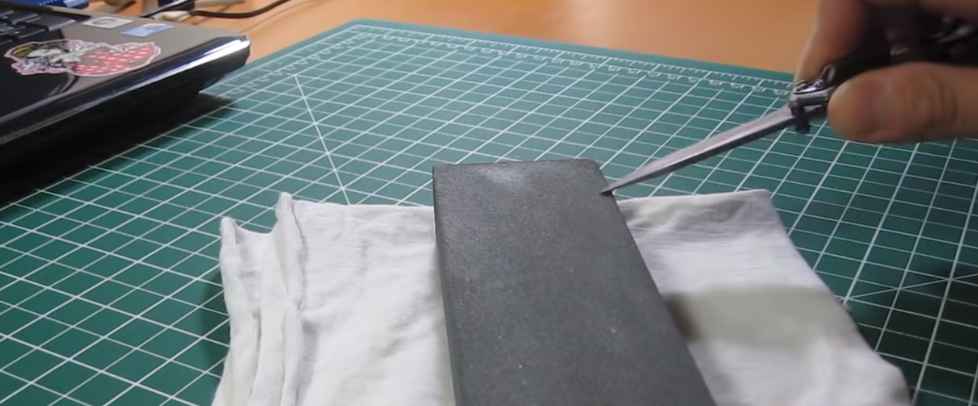
Now that we have figured out our angles, now we must figure out how to do the job properly with stone. Well, here you have to be very careful because the way to sharpen the knife will have an effect on how sharp it has become. A few wrong moves can actually damage the blade beyond repair.
Once you have set the stone down and have the knife at a desirable angle, you must make smooth motions with the knife. While doing this, there are certain things you have to keep in mind.
The first thing is that the same number of strokes have to be made on both sides of the blade. Otherwise, it will not look or work right. Another thing you must keep in mind is that the entire blade needs to be sharpened, not just the tip of it.
Now, while sharpening the knife, there might be times when we might forget the angle. That cannot happen. If the angle is wrong, then the edge will not end up looking normal. A lot of adjustments will have to be made to ensure the knife works properly.
You must keep sweeping the blade to the stone until a burr forms. The burr is the collection of metal the forms on the other side of the blade when you are sharpening. In the end, it has to be removed or reduced to have a nice and razor-sharp edge.
How to Create the Sharp Edge?
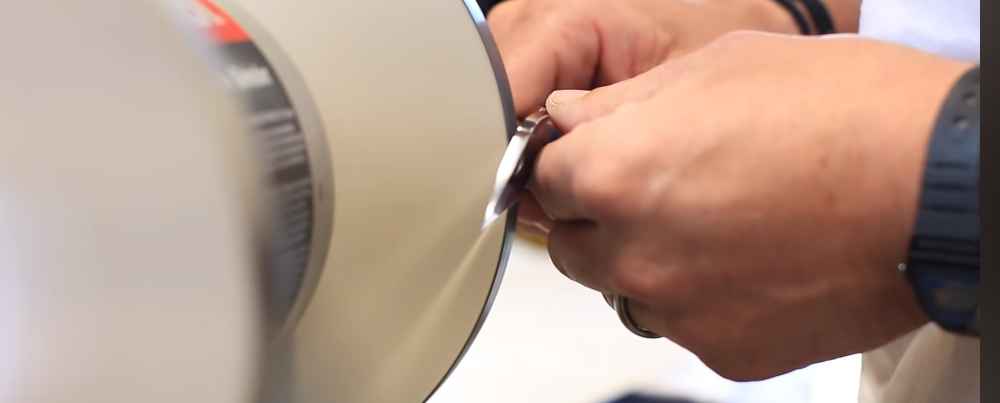
Without strokes at the perfect angle, we will be able to achieve the edge bevel, but you must know that there is another bevel right at the top of the one we created here. This is called the micro-level; this is the part that has to be the sharpest, as most of the cutting is done here.
To get the micro-bevel on the blade, you will have to do the same thing you had to do to get the edge bevel, but this time at a higher angle so that the sides are more slanted. This will make the knife much sharper and the cuts will be more precise.
While creating the edge, you have to be as gentle and light as possible, especially if you are using a coarse stone for the job. Too much pressure exerted in the blade during the sweep will lead to further damage on the blade that cannot be fixed.
There are times the blade might even break. Just make sure that you use some honing oil on the blade before starting the work, as the lubricant will stop the metal from getting too many scratches or marks.
Different Kinds of Stones You Can Use
The stone is the most important part of the sharpening process. If you have a good stone and know how to use it properly, then you really do not have much to worry about. But if you are new to this, there are a few things you will have to learn before you become an expert at this task.
There are different types of stones you can procure to get this job done. Each of the stones has its own characteristics, and they will leave a different effect on the blade.
Along with that, the stones have various grits; therefore, you will see that some are easier to work with than others.
1. Oil Stone
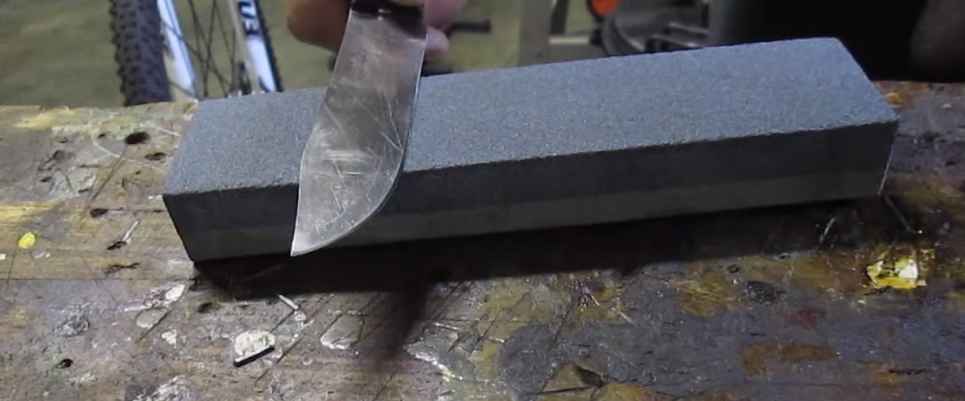
This is the one thing people have at their homes most of the time. They are very common, and most hardware stores carry them. You will be able to get a very good result from using this in most of the cases. But with a very old and dull knife, this will not be the best option. It has less grit, and therefore, you will have to keep sweeping and stroking the blade to the stone to sharpen it. As it takes a much longer time, you might opt for something else.
2. Ceramic Stone

Ceramic stones are considered as the best knife sharpener for pocket knives by a lot of people. This type of stone is more appropriate for people who have been sharpening knives for a very long time. If you are new, then you might not be able to work it properly.
Along with the experience level, another thing you will have to see is the quality of the stone; it cannot be too hard or too soft, you will have to find the perfect balance between the two so that you have the easiest time sharpening the knife.
3. Synthetic Stone
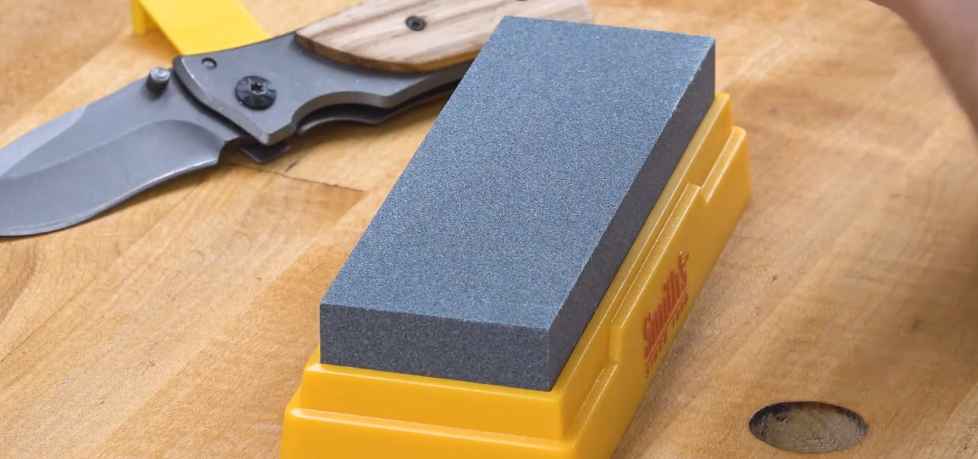
Most people now have started to use these synthetic stones to sharpen their knives. For the most part, you should not have any problems using this, but you need to keep in mind that this is more appropriate for large knives than the pocket knives.
How to Measure the Sharpness of the Knife?
After you have done all the hard work, it is time to determine whether the knife is sharp or not, and in order to do that, you can employ different tests. But as the knife in hand is a pocket knife, the simplest test would be the ‘shave test’. But be careful when you are doing this test.
In this test, you will try to shave off your arm or leg hair using the knife. If all the hair comes off in an easy sweep of the knife, then you will know that you did a great job, and the knife is indeed sharp.
But, if all the hair does not come off, then you will know that the knife needs further sharpening. You can go over the blade with the stone again, and that should do the trick.
Final Thoughts
Sharpening your pocket knife should not come as a very big challenge for you. However, the knives can be sharp, so it is always advisable to be careful, especially if you have not used one often.
I hope you find this information sufficient to finish the task.